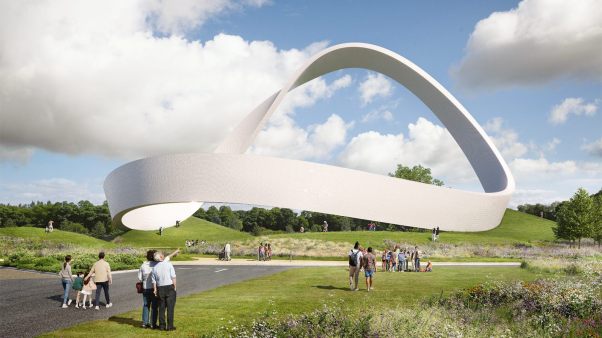Church Kitchens Get Chopped,” wrote Daniel Silliman in a news article for our March/April issue (p. 77). The architects he interviewed said that newly built or remodeled spaces might have a “sink and coffee pot” or a café serving coffee and pastries, but no expansive countertop or industrial ovens.
“Makes me sad,” lamented one Facebook commenter. “I remember being in the big, beautiful kitchen at [my church] watching my mom and my Aunt Joe Ann help prepare big meals for church events and for people in need. Servant-hearted people doing good work. I think the church is missing out by not doing this anymore.”
Of course, many are still fighting the kitchen decline. “Not at my church, thank goodness!” said another person on Facebook. “Our church has quarterly Sunday potlucks, where you eat things you never see in restaurants, and we have Wednesday night dinners most of the year.” A third wrote, “We use our kitchen all the time. We paid off the mortgage and made a big dinner for the congregation of danish meatballs, rice, veggies, salads.”
For some churches, kitchens are essential to ministry. A reader shared: “One of the churches in our county was burned by an arsonist. They chose to rebuild the fellowship hall with a kitchen first and save money to do the sanctuary in the future. They wanted to be able to serve the community in addition to their worship services, and a fellowship hall fits both needs.”
What is clear is that church space, including kitchens (or their absence), affects church culture. “When I read your story, I thought of something I read years ago about the introduction of the bowl and how that changed civilization,” wrote Gene Kruckemyer of Sanford, Florida. “Before the bowl, people would eat what was individually cooked over a fire, or on hot rocks, or not cooked at all. But the bowl introduced communal cooking and eating, bringing people together … just like the church kitchen.”
Kate Lucky, senior editor, culture and engagement
Faithful Remnants p. 32
A great article addressing the prophetic witness of the Japanese evangelical church. We may not be many in number, but numeric growth is not the only way God is glorified.
@KazusaOkaya
There is so much life in that 1 percent that it eclipses anything I’ve found in the Western church. I am still moved by the level of devotion, trust, and perseverance I found among Japanese Christians. It’s no surprise that Japan has been the spiritual birthplace of so many sojourners to its shores, myself included. Take heart; God works powerfully there.
@lee.angesy
Keller’s Hope for Renewal p. 50
Collin Hansen writes that “we can unite as Christians around an apologetic method grounded in biblical theology and adorned with spiritual fruit.” When theological purity is cited, it is very often followed by a call to apologetics. However, the emphasis on apologetics causes unintentional problems. Apologetics is a method of defending one’s viewpoint from alternate viewpoints and often gives rise to an exclusionary orthodoxy. It is not a method for listening to and learning from other voices. It is all about tradition-centric content control, whether Reformed, Catholic, Presbyterian, Baptist, Methodist, or Eastern Orthodox.
Tim Keller dreamed of a unifying vision for Christianity. I don’t believe a unifying vision for the kingdom of God will be realized through any one tradition’s apologetic. It needs to make room for followers of Jesus who may be questioners, doubters, those reconstructing, and those who may not agree with the majority of the faithful. Very simply, the ultimate sign of a unifying vision is being the “beloved community”—those who embody what Jesus said are the two greatest commandments upon which “all the Law and the Prophets hang” (Matt. 22:40). This is the “spiritual fruit” of unity.
Martin Willow, Champlin, MN
Justin Brierley Does the Unbelievable,” p. 56
[Brierley’s] program helped me a lot during the college years and the subsequent quarantine. The discussion helped me see more perspectives and increase my faith in the gospel.
@michaelliepr
The Ideal Church … Building p. 79
Church architecture matters. While the church isn’t the building, and believers can gather anywhere, having a dedicated place for worship and discipleship is important. What we believe about the church’s purpose, mission, and the authority of Scripture should shape how our churches look. People long for what is timeless, not trendy, because they long for the timeless God. The modern church should take the hint. Bring back the center pulpit. Let in natural light. Turn off the complicated production. Recover the regulative principle of worship. Remember the means of grace—Word, prayer, and sacraments. Spend less time chasing trends and more time preaching the Bible.
@MenYouMatter
I’m glad it doesn’t have to be one or the other. Meeting in a more “modern” facility now, I miss gathering in a space that conveys the holiness and grandeur and beauty of God and the gospel, just as I miss gathering in a mud hut in Uganda and on the floor in a Central Asian flat.
@KingdomGuy1
I find traditional churches often feel cold and uninviting. Wooden benches! And too formal. A big multipurpose space with partitions and so on is practical and can be made to look nice—traditional, even—if that is what is desired. We should recognize there is no exact model in the Bible for how church should be.
Ronald Eccles















